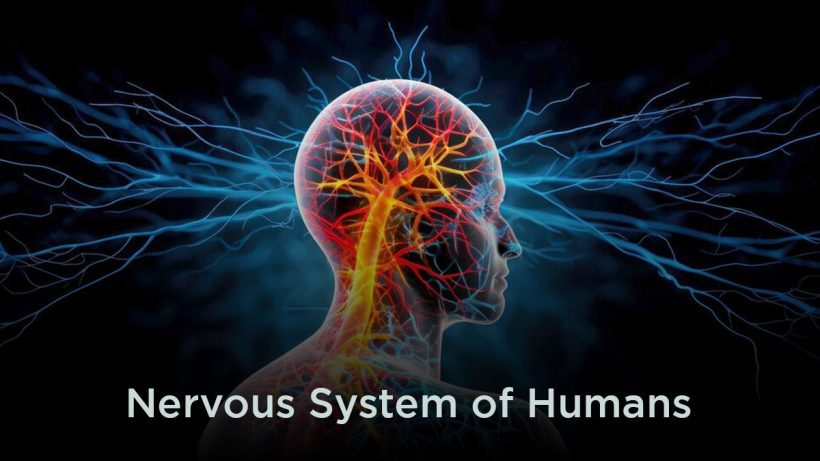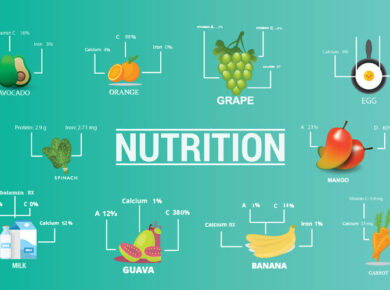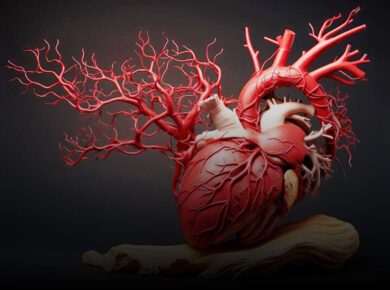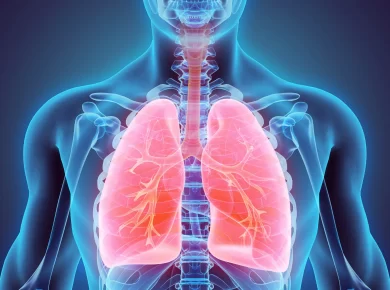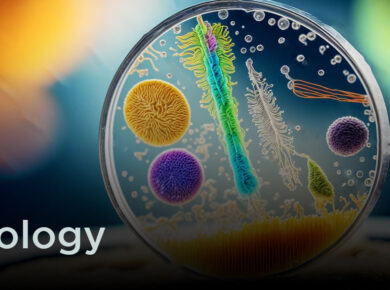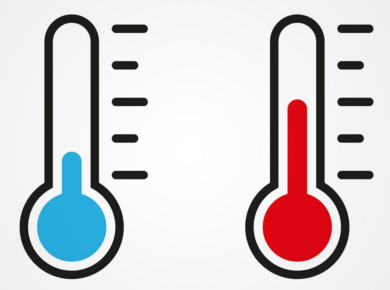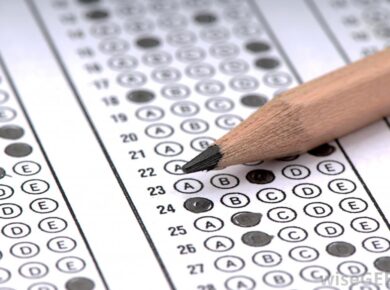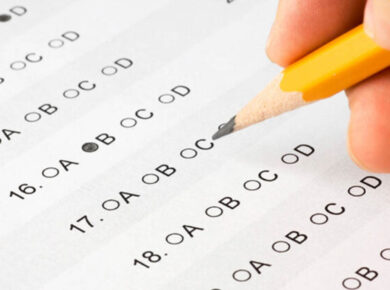Nervous System of the Humans
The nervous system is an organ system containing a network of specialized cells called neurons that coordinate the actions of an animal and transmit signals between different parts of its body. In most animals the nervous system consists of two parts, central and peripheral. The central nervous system of vertebrates (such as humans) contains the brain, spinal cord and retina.
The peripheral nervous system consists of sensory neurons, clusters of neurons called ganglia and nerves connecting them to each other and to the central nervous system. These regions are all interconnected by means of complex neural pathways. The enteric nervous system, a subsystem of the peripheral nervous system, has the capacity, even when severed from the rest of the nervous system through its primary connection by the vegus nerve, to function independently in controlling the gastrointestinal system.
Neurons send signals to other cells as electrochemical waves travelling along thin fibers called axons, which cause chemicals called neurotransmitters to be released at junctions called synapses.
A cell that receives a synaptic signal may be excited, inhibited or otherwise modulated. Sensory neurons are activated by physical stimuli impinging on them and send signals that inform the central nervous system of the state of the body and the external environment. Motor neurons, situated either in the central nervous system or in peripheral ganglia connect the nervous system to muscles or other effector organs.
Central neurons, which in vertebrates greatly outnumber the other types, make all of their input and output connections with other neurons. The interactions of all these types of neurons form neural circuits that generate an organism’s perception of the world and determine its behavior. Along with neurons, the nervous system contains other specialized cells called glial cells (or simply glia), which provide structural and metabolic support.

Nervous systems are found in most multicellular animals, but vary greatly in complexity. Sponges have no nervous system, although they have homologs of may genes that play crucial roles in nervous system function and are capable of several whole body responses, including a primitive form of locomotion.
Placozoans and mesozoans other simple animals that are not classified as part of the subkingdom Eumetazoa-also have no nervous system. In radiata (radially symmetric animals such as jellyfish) the nervous system consists of a simple nerve net. Bilateria, which include the great majority of vertebrates and invertebrates, all have a nervous system containing a brain, one central cord (or two running in parallel) and nerves. The size of the bilaterian nervous system ranges from a few hundred cells in the simplest worms to on the order of 100 billion cells in humans. neuroscience is the study of the nervous system.
As the most complex system, the nervous system serves as the body control center and communications electrical chemical wiring network. As a key homeostatic regulatory and coordinating system, it detects, interprets and external conditions.
The nervous system integrates countless bits of information and generates appropriate reactions by sending electrochemical impulses through nerves to effector organs such as muscles and glands. The brain and spinal cord are the central nervous system (CNS), the connecting nerve processes to effectors and receptors serve as the peripheral nervous system (PNS). Special sense receptors provide for teste, smell, sight, hearing and balance. Nerves carry all messages exchanged between the CNS and the rest of the body.
The neuron transmits electric signals like an electric wire. The perikaryon (cell body) is the neuron central part. Dendrites, short branches, extend from the neuron. These input channels receive information form other neurons or sensory cells (cells that receive information from the environment). A long branch, the axon, extends from the neuron as its output channel. The neuron sends messages along the axon to other neurons or directly to muscles or glands.
Neurons must be linked to each other in order to transmit signals. The connection between two neurons is a synapse. When a nerve impulse (electrical signal) travels across a neuron to the synapse, it cause the release of neurotransmitters. These chemicals carry the nerve signal across the synapse to another neuron.
Nerve impulses are propagated (transmitted) along the entire length of an axon in a process called continuous conduction. To transmit nerve impulses faster, some axons are partially coated with myelin sheaths. These sheaths are composed of cell membranes from Schwann cells, a type of supporting cell outside the CNS.
Nodes of Ranvier (short intervals of exposed axon) occur between myelin sheaths. Impulses moving along myelinated axons jump from node to node. This method of nerve impulse transmission is saltatory conduction.
The brain has billions of neurons that receive, analyze and store information about internal and external conditions. It is also the source of conscious and unconscious thoughts, moods and emotions. Four major brain divisions govern its main functions the cerebrum, the diencephalon, the cerebellum and the brain stem.
The cerebrum is the large rounded area that divides into left and right hemispheres (halves) at a fissure (deep groove). The hemispheres communicate with each other through the corpus callosum (bundle of fibers between the hemispheres). Surprisingly, each hemisphere controls muscles and glands on the opposite side of the body. Comprising 85 percent of total brain weight, the cerebrum controls language, conscious thought, hearing, somatosensory functions (sense of touch), memory, personality development and vision.
Gray matter (unmyelinated nerve cell bodies) composes the cerebral cortex (outer portion of the cerebrum). Beneath the cortex lies the white matter (myelinated axons). During embryonic development, the cortex folds upon itself t form gyri (folds) and sulci (shallow grooves) so that more gray matter can reside within the skull cavity.
The diencephalon forms the central part of the brain. It consists of three bilaterally symmetrical structures, the hypothalamus, thalamus and epithalamus. The hypothalamus master switchboard resides in the brain stem upper end. It controls many body activities that affect homeostasis (maintenance of a stable internal environment in the body).
The hypothalamus is the main neural control center (brain part that controls endocrine glands). The pituitary gland lies just below the hypothalamus. The pituitary gland is a small endocrine gland that secretes a variety of hormones (organic chemicals that regulate the body’s physiological processes). When the hypothalamus detects certain body changes, it releases regulating factors (chemicals that stimulate or inhibit the pituitary gland). The pituitary gland then releases or blocks various hormones. Because of this close association between the nervous and endocrine systems, together they are called the neuroendocrine system.
The hypothalamus also regulates visceral (organ-related) activities food and fluid intake, sleep and wake patterns, sex drive, emotional states and production of antidiuretic hormone (ADH) and oxytocin. The pituitary gland produces both these hormones.
The thalamus is a relay and pre processing station for the many nerve impulses that pass through it. Impulses carrying similar messages are grouped in the thalamus, then relayed to the appropriate brain areas.
The epithalamus is the most dorsal (posterior) portion of the diencephalon. It contains a vascular network involved in cerebrospinal fluid production. Extending from the epithalamus posteriorly is the pineal body, or pineal gland. Its function is not yet fully understood, it is thought to control body rhythms.
At the rear of the brain is the cerebellum. The cerebellum is similar to the cerebrum, each has hemispheres that control the opposite side of the body and are covered by gray matter and surface folds. In the cerebellum, the folds are called folia, in the cerebrum, sulci. The vermis (central constricted area) connects the hemispheres. The cerebellum controls balance, posture and coordination.
The brain stem connects the cerebrum and cerebellum to the spinal cord. Its superior portion, the midbrain, is the center for visual and auditory reflexes, examples of these include blinking and adjusting the ear to sound volume. The middle section, the pons, bridges the cerebellum hemispheres and higher brain centers with the spinal cord. Below the pons lies the medulla oblongata, it contains the control centers for swallowing, breathing, digestion and heartbeat.
The reticular formation extends throughout the midbrain. This network of nerves has widespread connections in the brain and is essential for consciousness, awareness and sleep. It also filters sensory input, which allows a person to ignore repetitive noises such as traffic, yet awaken instantly to a baby’s cry.
The spinal cord is a continuation of the brain stem. It is long, cylindrical and passes through a tunnel in the vertebrae called the vertebral canal. The spinal cord has many spinal segments, which are spinal cord regions from which pairs (one per segment) of spinal nerves arise. Like the cerebrum and cerebellum, the spinal cord has gray and white matter, although here the white matter is on the outside. The spinal cord carries messages between the CNS and the rest of the body and mediates numerous spinal reflexes such as the knee jerk reflex.
Meninges, three connective tissue layers, protect the brain and spinal cord. The outermost dura layer forms partitions in the skull that prevents excessive brain movement. The arachnoid middle layer forms a loose covering beneath the dura. The innermost pia layer clings to the brain and spinal cord, it contains many tiny blood vessels that supply these organs.
Another protective substance, cerebrospinal fluid, surrounds the brain and spinal cord. The brain floats within the cerebrospinal fluid, which prevents against crushing under its own weight and cushions against shocks form walking, jumping and running.
The peripheral nervous system includes sensory receptors, sensory neurons and motor neurons. Sensory receptors are activated by a stimulus (change in the internal or external environment). The stimulus is converted to an electronic signal and transmitted to a sensory neuron. Sensory neurons connect sensory receptors to the CNS. The CNS processes the signal and transmits a message back to an effector organ (an organ that responds to a nerve impulse from the CNS) through a motor neuron.
The PNS has two parts: the somatic nervous system and the autonomic nervous system. The somatic nervous system or voluntary nervous system, enables humans to react consciously to environmental changes. It includes 31 pairs of spinal nerves and 12 pairs of cranial nerves. This system controls movements of skeletal (voluntary) muscles.
Thirty one pairs of spinal nerves emerge from various segments of the spinal cord. Each spinal nerve has a dorsal root and a ventral root. The dorsal root contains afferent (sensory) fibers that transmit information to the spinal cord from the sensory receptors. The ventral root contains efferent (motor) fibers that carry messages from the spinal cord to the effectors. Cell bodies of the efferent fibers reside in the spinal cord gray matter. These roots become nerves that innervate (transmit nerve impulses to) muscles and organs throughout the body.
Twelve pairs of cranial nerves transmit from special sensory receptors information on the senses of balance, smell, sight, teste and hearing. Cranial nerves also carry information from general sensory receptors in the body, mostly from the head region. This information is processed in the CNS, the resulting orders travel back through the cranial nerves to the skeletal muscles that control movements in the face and throat, such as for smiling and swallowing. In addition, some cranial nerves contain somatic and autonomic motor fibers.
The involuntary nervous system (autonomic nervous system) maintains homeostasis. As its name implies, this system works automatically and without voluntary input. Its parts include receptors within viscera (internal organs), the afferent nerves that relay the information to the CNS, and the efferent nerves that relay the action back to the effectors. The effectors in this system are smooth muscle, cardiac muscle and glands, all structures that functions without conscious control. An example of autonomic control is movement of food through the digestive tract during sleep.
The efferent portion of the autonomic system is divided into sympathetic and parasympathetic systems. The sympathetic nerves mobilize energy for the ‘Fight or Flight’ reaction during stress, causing increased blood pressure, breathing rate and blood flow to muscles. Conversely, the parasympathetic nerves have a calming effect; they slow the heartbeat and breathing rate and promote digestion and elimination. This example of intimate interaction with the endocrine system is one of may that explain why the two systems are called the neuroendocrine system.
The relationship between sensory and motor neurons can be seen in a reflex (rapid motor response to a stimulus). Reflexes are quick because they involve few neurons. Reflexes are either somatic (resulting in contraction of skeletal muscle) or autonomic (activation of smooth and cardiac muscle). All reflex arcs have five basic elements a receptor, sensory neuron, integration center (CNS), motor neuron and effector.
Spinal reflexes are somatic reflexes mediated by the spinal cord. These can involve higher brain centers. In a spinal reflex, the message is simultaneously sent to the spinal cord and brain. The reflex triggers the response without waiting for brain analysis. If a finger touches something hot, the finger jerks away from the danger.
The burning sensation becomes an impulse in the sensory neurons. These neurons synapse in the spinal cord with motor neurons that cause the burned finger to pull away. This spinal reflex is a flexor or withdrawal reflex.
The stretch reflex occurs when a muscle or its tendon is struck. The jolt causes the muscle to contract and inhibits antagonist muscle contraction. A familiar example is the patellar reflex or knee jerk reflex, that occurs when the patellar tendon is struck. The impulse travels via afferent neurons to the spinal cord where the message is interpreted.
Two messages are sent back, one causing the quadriceps muscles to contact and the other inhibiting the antagonist hamstring muscle from contracting. The contraction of the quadriceps and inhibition of hamstrings cause the lower leg to kick or knee jerk.
Sense organs
The sense organs are highly specialized structures that receive information from the environment. These organs contain special sense receptors ranging from complex structures, such as eyes and ears, to small localized clusters of receptors, such as taste buds and olfactory (receptors for smell).
Smell and taste are chemical senses, which contain chemoreceptors that respond to chemicals in solution. Food chemicals dissolved in saliva stimulate taste receptors in taste buds. The nasal membranes produce fluids that dissolve chemicals in air. These chemicals stimulate smell receptors in olfactory epithelium. The chemical senses complement each other and respond to many of the same stimuli.
Photoreceptors, which include rods and cones, in back of the eye respond to light energy. Rods provide color vision. Cones are most concentrated at the back center of each eye. Rods are more numerous than cones and surround the cones travels via the optic nerve into the brain for interpretation.
The ear has two specialized functions: sound wave detection and interpretation of the head position in space. Sound waves enter the outer ear through the external auditory canal (ear canal) and strike the tympanic membrane (eardrum). Vibration of the eardrum moves three ossicles (small bones) inside the middle ear, which in turn stimulate the organ of Corti (hearing receptor in the inner ear). Impulses travel from the organ of corti through the vestibulocochlear nerve to be interpreted by the brain.
The ear also contains equilibrium (sense of balance) receptors. The vestibular apparatus, a group of equilibrium receptors in the inner ear, sense movement in space. Maculae receptors in the vestibule monitor static equilibrium (head position with respect to gravity when the body is still). Cristae receptors in the semicircular canals monitor dynamic equilibrium (movement). Impulses from the vestibular apparatus travel along the vestibulocochlear nerve to appropriate brain areas. These centers start responses that fix the eyes on objective and stimulate muscles to maintain balance.
Mechanoreceptors respond to mechanical energy forces: touch, pressure, stretching and movement. Ranging in complexity from free nerve endings beneath the skin to more complex tactile receptors at the bases of hair, mechanoreceptors change shape when pushed or pulled.
Different types of skin receptors sense different environmental stimuli. Free nerve endings sense pain. Specialized receptors such as Merkel’s discs and Meissner’s corpuscles sense touch. Pacinian corpuscles sense deep pressure. Naked nerve endings are thought to be responsible for sensing temperature.
Other types of sensory receptors provide the brain information on the body. Interreceptor in body organs inform the CNS about internal conditions such as hunger and pain. Proprioceptors in joints, tendons and muscles detect change in position of skeletal muscles and bones. This information allows humans to be aware the positions of their trunk and limbs without having to see them.
For more updates, visit www.iasmania.com. Please share your thoughts and comments.
If you’re passionate about building a successful blogging website, check out this helpful guide at Coding Tag – How to Start a Successful Blog. It offers practical steps and expert tips to kickstart your blogging journey!
